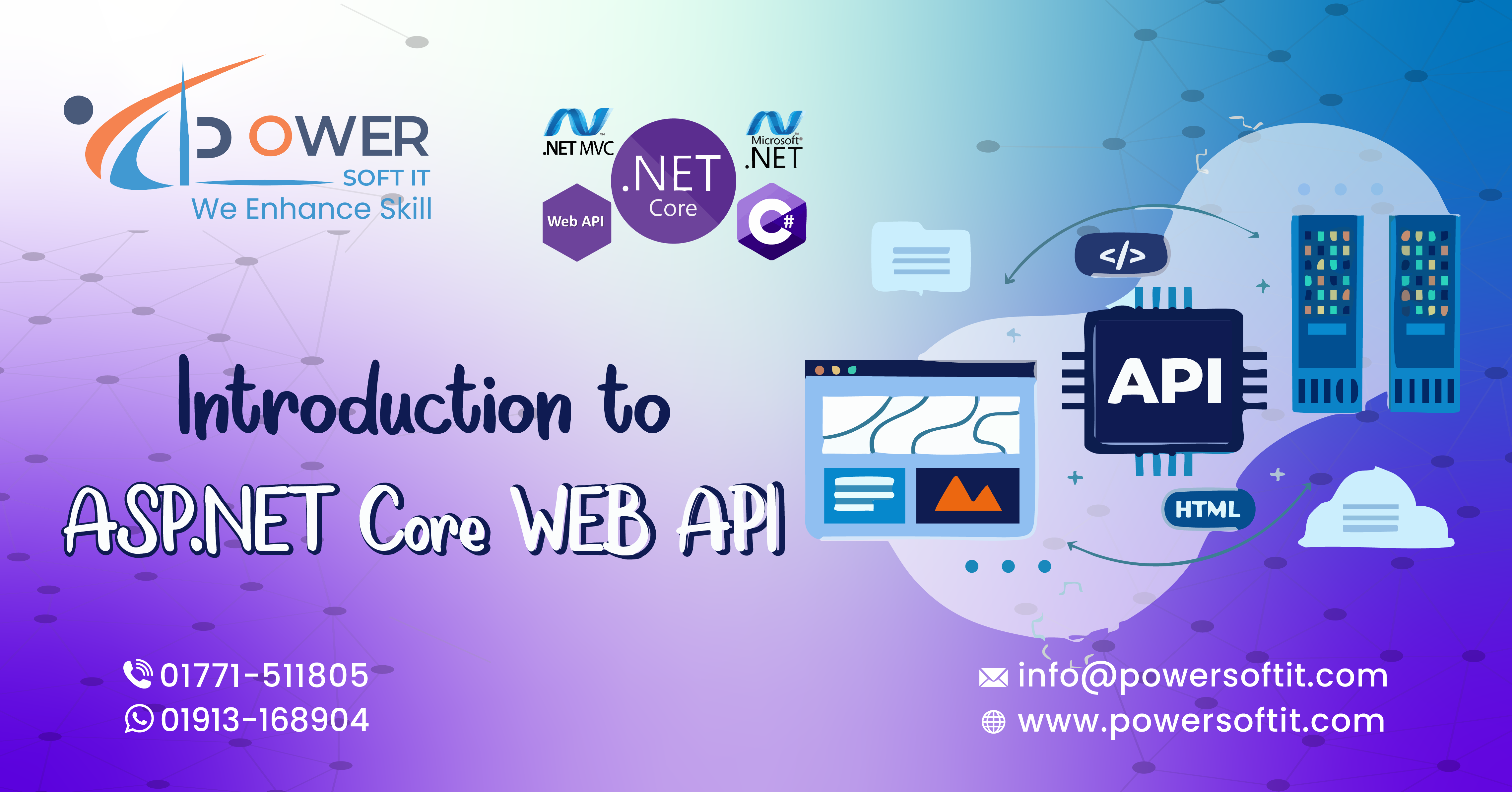Introduction to ASP.NET Core Web API: A Beginner’s Guide

What is ASP.NET Core Web API?
ASP.NET Core Web API is a framework designed to create RESTful APIs using the ASP.NET Core platform. It allows developers to expose application functionalities over HTTP, enabling communication between different systems like web apps, mobile applications, and microservices.
Why Choose ASP.NET Core Web API?
- Cross-Platform Support – Works seamlessly on Windows, Linux, and macOS.
- Lightweight & Fast – Uses a modular architecture, making it efficient for high-performance apps.
- Security Features – Built-in authentication and authorization using OAuth, JWT, and IdentityServer.
- Integration with Modern Technologies – Works well with Angular, React, and mobile apps.
What are best practices for ASP.NET Core Web API development?
There are 10 most important guidelines that will ensure your ASP.NET Core Web API is secure, scalable, and efficient. These guidelines are given below:
1. Use Proper Authentication & Authorization
Security should be a top priority. Implement JWT-based authentication or OAuth 2.0 to secure your API. Use ASP.NET Core Identity or external providers like Azure AD for authorization.
2. Implement API Versioning
Maintaining backward compatibility is crucial. Use API versioning to allow different clients to consume different versions:
[ApiVersion("1.0")] [Route("api/v{version:apiVersion}/[controller]")]
public class SampleController : ControllerBase { }
3. Use Dependency Injection
Leverage built-in dependency injection (DI) for managing services efficiently:
builder.Services.AddScoped();
This makes your application modular and testable.
4. Optimize Performance
- Use async programming (async and await) to improve response times.
- Implement caching with tools like Redis or in-memory caching.
- Enable pagination when fetching large datasets.
5. Handle Errors Gracefully
Return structured error messages to improve debugging:
return BadRequest(new { message = "Invalid request data." });
Use global exception handling with ExceptionMiddleware.
6. Enforce CORS Policies
Allowing unrestricted access to your API can be risky. Configure Cross-Origin Resource Sharing (CORS) properly:
builder.Services.AddCors(option => option.AddPolicy("corsPolicy",
policy => policy.WithOrigins(“https://powersoftit.com”)
.AllowAnyHeader()
.AllowAnyMethod()
));
7. Leverage Logging & Monitoring
Use Serilog, NLog, or Application Insights for logging API activity. Also, monitor performance using Prometheus or Azure Monitor.
8. Document Your API and Configure for Token based Authentication
Integrate Swagger (Swashbuckle) for automatic API documentation. Also configure Swagger for Authorization Bearer Token.
builder.Services.AddSwaggerGen(opt =>
{
opt.SwaggerDoc("v1", new OpenApiInfo { Title = "MyAPI", Version = "v1" });
opt.AddSecurityDefinition("Bearer", new OpenApiSecurityScheme
{
In = ParameterLocation.Header,
Description = "Please enter token",
Name = "Authorization",
Type = SecuritySchemeType.Http,
BearerFormat = "JWT",
Scheme = "bearer"
});
opt.AddSecurityRequirement(new OpenApiSecurityRequirement
{ {
new OpenApiSecurityScheme
{
Reference = new OpenApiReference
{
Type=ReferenceType.SecurityScheme,
Id="Bearer"
}
},
new string[]{}
}
});
});
This makes it easier for developers to understand and consume your API.
9. Write Unit & Integration Tests
Ensure your API’s reliability with xUnit, NUnit, or MSTest. Mock dependencies with Moq.
10. Secure Sensitive Data
Never expose connection strings or API keys directly in your code. Use environment variables or Azure Key Vault for secure storage.
Following these best practices will help you build a high-quality, maintainable ASP.NET Core Web API. 🚀
Back to Blogs